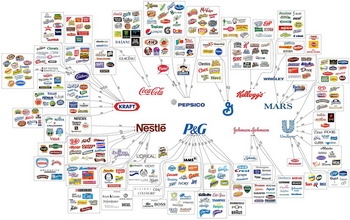Why Brands Still Don't Have a True Hispanic Marketing Strategy

According to a recent Google study that surveyed a select panel of senior-level marketers to see if the U.S. Hispanic audience was on their roadmap, most saw 11 to 25% of their company's growth coming from this demographic in the next three to five years. Still, many brands surveyed didn't have a marketing strategy for engaging this audience.
I can't be the only marketer that finds it baffling how the U.S. Hispanic market can be the most attractive and yet one of the most underserved at that same time. Working in Hispanic marketing for over a decade, I have heard over and over from marketers about the importance of this consumer group, but in 2016 very few are working towards a strategy to specifically and meaningfully reach us in a culturally relevant manner.
Here are two reasons why:
1. The “Total Market” Syndrome
With the development and rise of “Total Market” strategies over the past few years, corporations and marketers have found an excuse to generalize strategies to reach the diverse US market as a whole. Essentially, Total Market refers to a melting pot of marketing strategies that are intended to speak to universal truths while gaining efficiencies.
These efficiencies, however, inherently ignore an important fact: Hispanics are greatly influenced by strong and distinct cultural values that guide their thoughts, actions and, ultimately, motivations to buy. Implementing a total market strategy may save money, but often leads to a less engaging message that lacks in authenticity and leaves the Latino consumer asking “what's in it for me?” The brands that understand this and are making an effort to foster genuine connections based on key cultural differences are winning Hispanic consumers' loyalty and dollars compared to those who take a one-size-fits-all approach.
2. No Hablo Español (or Language Matters)
As marketers spend more time investigating the Hispanic market, they have come to understand that the majority of this group's population recent growth comes from U.S. births—meaning more and more of the population is proficient in English. The problem is that half of marketers believe that Hispanic marketing means marketing solely in Spanish. The other half assume that since the Hispanic audience is bilingual or English-dominant, they can be effectively reached through the same advertising and strategies developed for general market audiences.
Neither is the correct approach; marketers end up overlooking the important role that cultural ties and community connections play to this Hispanic consumer. Cultural nuances are often more important than language. While language can be a trigger, culturally- relevant content and messaging can engage the entire spectrum of the Latino audience.
I often compare targeting Hispanics versus the general market to the differences in targeting men and women. Marketers would not likely use the same piece of content to reach and connect with a male as they would a female (just ask Dollar Shave Club). The voice, experience and reasons to buy can be completely different. The same goes for the Hispanic market.
Source: Published originally on MediaPost.com Why Brands Still Don't Have a True Hispanic Marketing Strategy , by Erin Conrad, December 29, 2016.